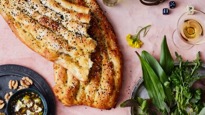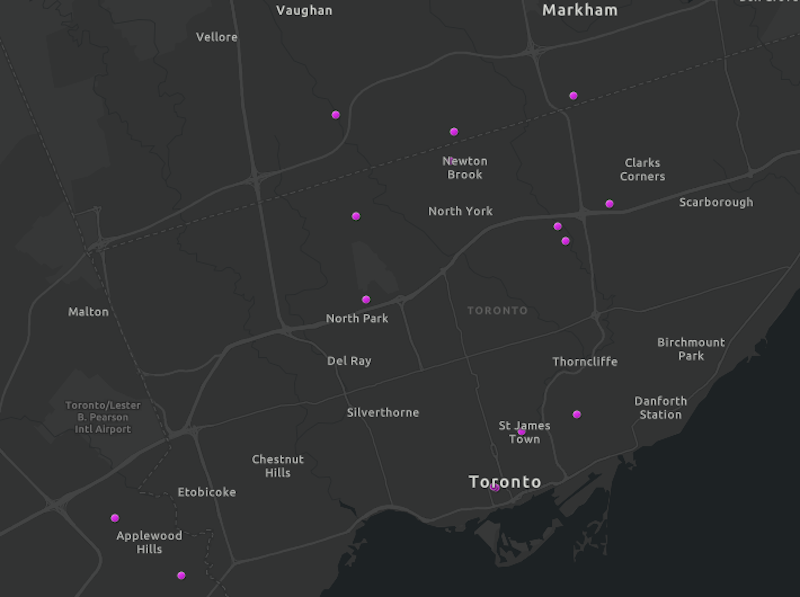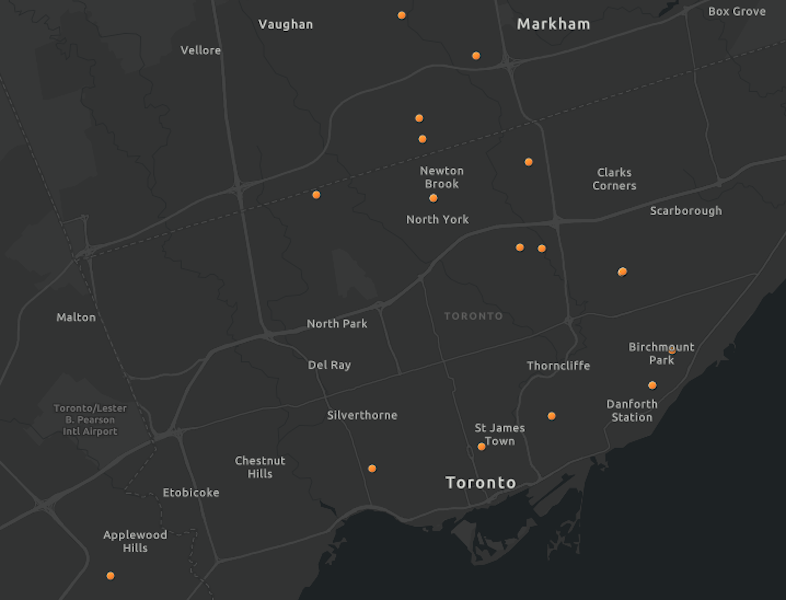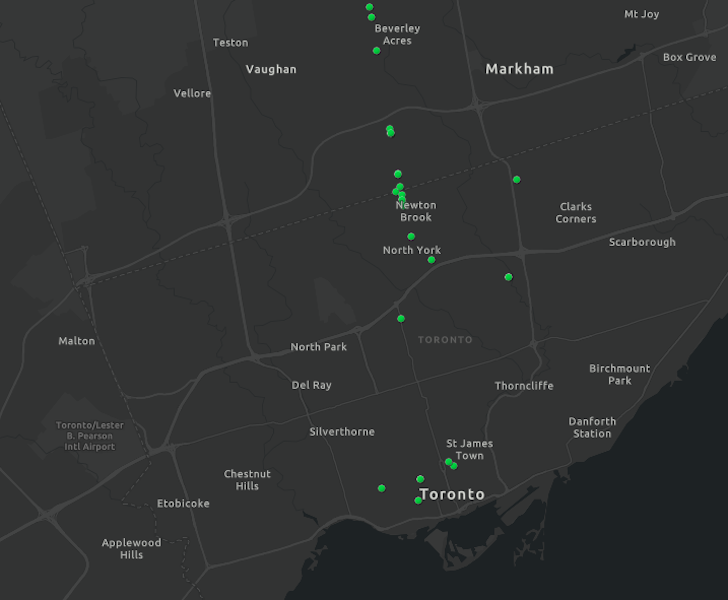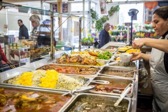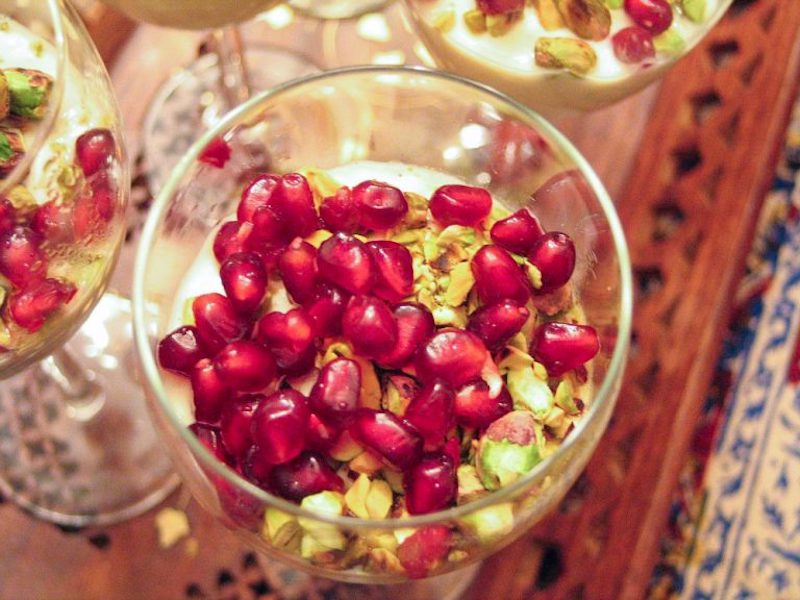
Just like Little Italy or Greektown, Toronto’s ‘Persian town’ is a lively centre of restaurants, bakeries, and grocery stores that provide food and memories of home for migrants and exciting new cuisines for the city’s culinary adventurers. But unlike these older ethnic neighbourhoods, which had clearly defined physical spaces on Danforth to the East and Ossington to the West, the Persian community in Canada has developed just recently, following the Revolution of 1979, and in a more dispersed fashion.
Rojina Samifanni
University of Toronto at Scarborough
The first Persian restaurant in Toronto was probably Darvish, which was founded in 1985 and has moved from North Yonge to West Bloor before settling in its current home at 508 Yonge Street. Its durability and success in the heart of downtown provides a testament to the attractions of Persian cuisine. Another legendary Persian establishment is Garni Bakery, which first opened in North York followed by another location in Richmond Hill, and is known for their Persian bread called barbari. Another old timer in the Persian community, now sadly closed, was Thornhill’s
“One thing that none of these grocery stores, cafés, or restaurants can replace is the nostalgic taste of street foods and homemade dishes and pastries. Many older Persians and recent immigrants crave certain foods from back home such as Persian ice cream called akbar mashti or pirashki, a special custard-filled bread.”
Karoon Restaurant, which provided Persian cuisine, live music, and dancing. A dance floor and belly dancing performances were important attractions for many although not all Persian restaurants. Families would gather for celebrations or a night out to eat and dance with either live music or a DJ.
By 1996, Toronto’s Persian community had reached a critical mass with the publication of the city’s first Persian guide, but it still remained dispersed, as can be seen from a map of these locations. At the time, the majority of businesses that participated were big grocery stores selling produce that couldn’t be found in mainstream supermarkets in Ontario to the Persian community.
Surprisingly, given the importance of bread and pastry to Persian cuisine, no bakeries were listed in the directories. Early bakeries may simply not have taken out advertisements, but it is also possible that grocery stores provided the Persian sweets many people crave. Persian supermarkets today contain a section of pastries for sale to take home, although they lack the congenial area to sit and eat that many bakeries have.
Just four years later, with the publication of the second Persian directory in 2000, the number of businesses had increased substantially, including specialized bakeries and restaurants, but with fewer grocery stores. The bigger grocery stores were replaced with smaller ones. Businesses still had not started to cluster however; a good portion were located on the Danforth, perhaps attracted by the similar cuisine and culture of Greektown. Shatter-Abbas Restaurant, which appeared first in the 2000 directory, combined elements of a fast food and sit-down restaurant, a winning formula to this day. Many consider it to have the best Persian kabob in North York.
Darband Café is another legendary establishment that serves special breakfast meals that can be found in almost no other restaurant in Toronto. Their menu consists of haleem (grain and lentil stew) and khaleh pacheh (soup of cow and sheep innards), two filling and nutritious dishes that take hours to prepare.
In the old days, women cooked these dishes the night before so they would be ready for the next morning. These are foods that are eaten very early in the morning because they are such strong concoctions and take longer to digest than normal breakfast meals.
Today, “Tehran-TO” has assumed a more defined presence at the border of North York and Thornhill, a big shift from 2000. Although the majority of Persian businesses are clustered in this region, especially along upper Yonge Street, there are also many in downtown Toronto. The shift from groceries to restaurants, which had begun already around 2000, has continued, and now grocery stores are reduced to a minimum. In my opinion, that indicates the acceptance of Persian foods into Canadian culture. Many grocery stores and restaurants offer Persian versions of fast food take out.
This provides ‘cultural’ food for Persians and allows them to eat what would be considered homemade foods. Many dishes that were from scratch using fresh ingredients can now be purchased in cans or concentrates. For example, a stew called ghormeh sabzi requires a variety of fresh herbs to be chopped and cooked with meat; however, stores today offer these herbs already prepared and ready to just mix with meat. Does everyday convenience make these dishes less special? I think so. Some grocery stores now also contain a separate section of take-out Persian dishes, which has become very convenient for those who are unable to cook or don’t have the time. One particular grocery store that has remained successful through the years is Super Khorak opening in 1989 on Yonge Street, although it did not advertise in the early guides.
As the community has grown, and old restaurants and stores have closed or moved, new ones have appeared to better serve the Persian community. Tavazo, a fabled Tehran institution established in 1950, opened in Ontario in 2002, with locations in North York and Richmond Hill. A Persian version of Bulk Barn, it sells nuts, dried fruit, pastries and dried herbs that are imported directly from Iran. During special times of the year such as Yalda night (Winter solstice), specific nut mixtures are imported from Iran to be sold to the Toronto Persian community. Unlike 1996, Tavazo is now the only place to buy the best Persian nuts and dried fruit in Toronto.
Nevertheless, it is safe to say that majority of Persians do not live in North York or Thornhill. And one thing that none of these grocery stores, cafés, or restaurants can replace is the nostalgic taste of street foods and homemade dishes and pastries. Many older Persians and recent immigrants crave certain foods from back home such as Persian ice cream called akbar mashti or pirashki, a special custard-filled bread. I guess Canadian and Persian cultures have influenced one another in the strangest ways.
Notes
Zarvaraq: Rāhnamā-yi mashāghil va nīyāzmandīʹhā-yi Īrānīyān-i Kānādā [Zarvaragh: Iranian Business Index of Canada]. Mississauga, ON: Shirkat-i Irtibāṭāt va Tablīghāt-i Sī Dī Āy, 1996, 2000.
